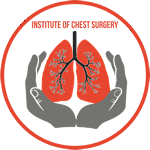Myasthenia Gravis (MG) is a rare autoimmune neuromuscular disorder that affects the communication between nerves and muscles, leading to muscle weakness and fatigue. In some cases of MG, a thymoma, a tumor originating from the thymus gland, may be present. The combination of Myasthenia Gravis with Thymoma can complicate the diagnostic process, as the presence of a thymoma can influence the disease course and treatment. In this comprehensive article, we will explore the diagnostic procedures and tests used by medical professionals to diagnose Myasthenia Gravis with Thymoma.
Understanding Myasthenia Gravis with Thymoma
Before delving into the diagnostic process, it is essential to understand the conditions individually. Myasthenia Gravis primarily affects the neuromuscular junction, where nerve impulses signal muscles to contract. In MG, the body’s immune system mistakenly attacks these receptors, reducing the number of available receptors, and leading to muscle weakness, particularly in the muscles that control eye movements, facial expressions, chewing, and swallowing.
Thymoma, on the other hand, is a tumor that develops in the thymus gland, which is a vital component of the immune system located in the chest. The exact relationship between thymoma and Myasthenia Gravis is not yet fully understood, but researchers believe that the tumor triggers an autoimmune response, leading to MG in some cases.
The Complexities of Diagnosis
Diagnosing Myasthenia Gravis with Thymoma can be a complex process, as the symptoms of MG can overlap with other neuromuscular or autoimmune disorders. Additionally, the presence of a thymoma adds an extra layer of consideration to the diagnostic approach. Medical professionals use a combination of clinical evaluations, specialized tests, and imaging studies to accurately diagnose this condition.
1. Medical History and Physical Examination
The diagnostic journey begins with a thorough medical history review, wherein the patient describes their symptoms, their progression, and any factors that exacerbate or alleviate the symptoms. Since the symptoms of Myasthenia Gravis can be diverse and variable, it is crucial for healthcare providers to pay close attention to even subtle complaints of muscle weakness or fatigue.
During the physical examination, the healthcare provider will assess muscle strength, reflexes, and the involvement of specific muscle groups. The hallmark of Myasthenia Gravis is fluctuating muscle weakness, which means that the symptoms may worsen with activity and improve with rest.
2. Neurological Evaluation
A detailed neurological assessment is crucial in identifying specific muscle weaknesses and determining if the pattern of muscle involvement aligns with Myasthenia Gravis. The physician may assess eye movements, facial expressions, speech, swallowing, and limb strength to gather relevant data.
In the case of Myasthenia Gravis with Thymoma, physicians are particularly vigilant in evaluating any signs or symptoms that may indicate the presence of a thymoma, such as chest pain, shortness of breath, or unexplained weight loss.
3. Edrophonium Test (Tensilon Test)
The edrophonium test, also known as the Tensilon test, is a rapid-acting diagnostic test used to evaluate muscle weakness and distinguish between myasthenic crisis and cholinergic crisis. A small amount of edrophonium chloride, a short-acting acetylcholinesterase inhibitor, is administered intravenously, and its effects on muscle strength are observed.
During the test, the patient’s muscle strength is assessed before and shortly after the administration of edrophonium. Improvement in muscle strength after the administration of edrophonium suggests Myasthenia Gravis. This test can be valuable in confirming the diagnosis, especially when other test results are inconclusive.
4. Blood Tests
Blood tests play a crucial role in the diagnosis of Myasthenia Gravis with Thymoma. These tests help check for the presence of specific antibodies associated with Myasthenia Gravis. Approximately 85% of MG patients have antibodies against the acetylcholine receptor (AChR). Another antibody, called MuSK (muscle-specific kinase), is found in a subset of MG patients who test negative for AChR antibodies.
The presence of these antibodies, along with clinical symptoms and other test results, can support the diagnosis of Myasthenia Gravis. Additionally, blood tests may help in assessing overall health, ruling out other medical conditions, and evaluating the functioning of vital organs.
5. Electromyography (EMG) and Nerve Conduction Studies (NCS)
Electromyography (EMG) and Nerve Conduction Studies (NCS) are specialized tests used to assess the electrical activity of muscles and nerves, respectively. These tests can help identify abnormal patterns of muscle response and detect any nerve dysfunction, supporting the diagnosis of Myasthenia Gravis.
During an EMG, a thin needle electrode is inserted into specific muscles to measure their electrical activity at rest and during muscle contraction. In Myasthenia Gravis, there is typically a decrease in the muscle’s response to repetitive nerve stimulation.
Nerve Conduction Studies, on the other hand, evaluate the speed and strength of nerve signals as they travel between different points in the body. These tests can help differentiate Myasthenia Gravis from other neuromuscular disorders that may present with similar symptoms.
6. Imaging Studies
Imaging studies, such as computed tomography (CT) or magnetic resonance imaging (MRI), are crucial in detecting the presence of a thymoma. These scans provide detailed images of the chest area, helping to identify the size, location, and characteristics of the tumor.
Thymomas are relatively rare tumors, and not all cases of Myasthenia Gravis are associated with thymoma. However, when a thymoma is detected, it can significantly impact the management of both conditions.
7. Chest X-ray
A chest X-ray may also be performed to examine the thymus gland and identify any abnormalities or masses. While a chest X-ray alone may not be sufficient to diagnose a thymoma, it can provide valuable initial information that may prompt further evaluation with advanced imaging studies.
8. Biopsy
In cases where a thymoma is suspected based on imaging studies, a biopsy of the tumor may be conducted to confirm its presence and determine whether it is benign or malignant. The biopsy involves obtaining a small tissue sample from the thymoma, which is then examined by a pathologist under a microscope.
The biopsy results can help guide treatment decisions and provide important prognostic information. A multidisciplinary team, including surgeons and oncologists, is often involved in the evaluation and management of thymomas.
Conclusion
Diagnosing Myasthenia Gravis with Thymoma requires a multidisciplinary approach and careful evaluation of the patient’s symptoms, medical history, and specialized test results. Prompt and accurate diagnosis is crucial in determining the most appropriate treatment plan and managing the condition effectively.
If you or someone you know is experiencing muscle weakness, fatigue, or any other symptoms suggestive of Myasthenia Gravis with Thymoma, it is essential to seek medical attention promptly. Early diagnosis and intervention can significantly improve the patient’s quality of life and prognosis.
Remember, this article is for informational purposes only and should not be considered a substitute for professional medical advice. Always consult a qualified healthcare provider for personalized evaluation and guidance regarding your specific health concerns.







